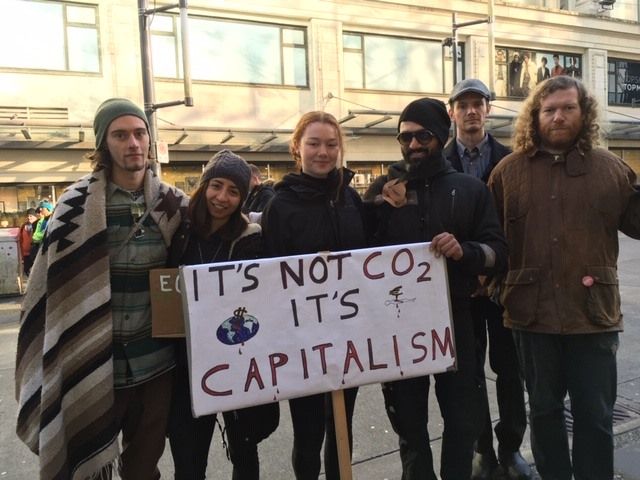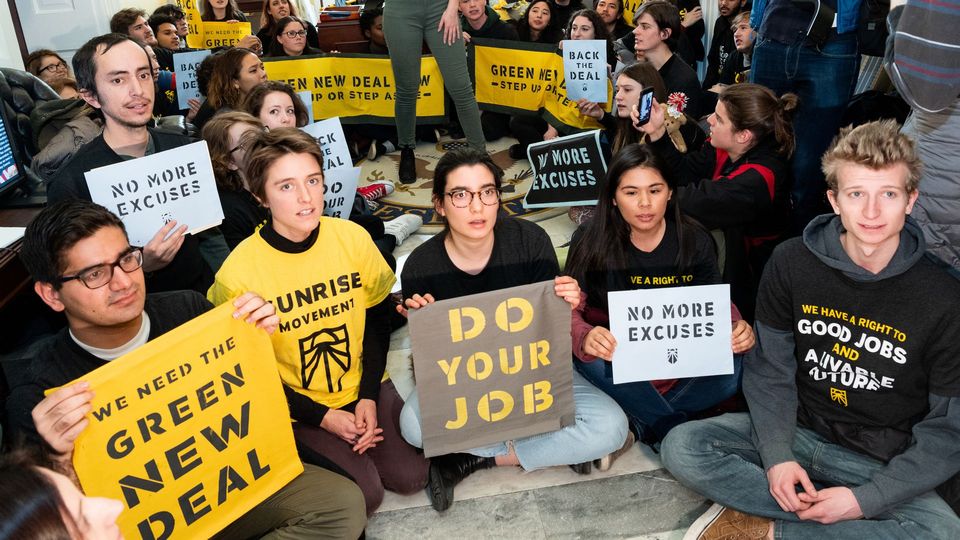2019: A year of Disasters and Hope
2019 saw huge youth-led protests around the world as climate disasters mounted. In September over 7.5 million marched and protested in 4,500 places across 150 countries. As the disasters get worse, the protests will grow in 2020. Many young people are rightly fearful of a future on a cooking planet.
Carbon dioxide releases were at a new high. The year was one of the hottest ever and the ice in the Arctic and Antarctic are melting at a record rate. The world’s glaciers are retreating faster. There were record-breaking hurricanes, floods, heatwaves and fires.
Australia is now engulfed in fire. In December, the start of their summer, new record high temperatures were set. 2019 was the hottest and driest year ever, creating the bushfire nightmare. The fires are expected to burn for months, until rain arrives. By early February, over eleven million hectares (twice the size of Nova Scotia) has burnt, killing over one billion animals and thirty-three people.
Meanwhile in Madrid, the annual international meeting to tackle climate change agreed to – more talks in future years. It has been 28 years since the world’s politicians agreed at the Rio conference in 1992 to act on climate change. Since then things have only got worse. We cannot rely on big business and their politicians – they continue to fail.
Canada shows both sides of the contradiction between youth demanding action and governments and big business continuing business as usual. In September, over a million people marched in nearly 100 towns and cities across the country. In 2018, Canada had the second highest greenhouse gas emissions per person in the world; only Saudi Arabia was worse.
A 2019 report from Environment and Climate Change Canada, points out that average temperatures worldwide have increased 0.8oC since 1948, but in Canada the increase is 1.7oC, more than double, and in the Arctic the increase is 2.3oC. The report warns of deadly heatwaves, increased forest fires and catastrophic flooding. If the glaciers in the Rockies continue to disappear at the present rate, then summer river water will be scarce, devastating prairie farming.
According to a 2019 UN report Canada will not meet even its current inadequate target to reduce greenhouse gases. The main driver is the oil and gas industry, especially the Alberta tar sands, where releases are expected to double between 2010 and 2030. The present policies of the federal and provincial governments are woefully inadequate – they are literally fiddling while the world burns.
The International Monetary Fund reported in 2019 that the full cost of Canadian subsides to fossil fuels is $60 billion a year. This includes the costs of pollution, congestion, health impacts and climate change. The International Institute for Sustainable Development calculates the direct federal subsidies to oil and gas at $3.3 billion per year, as well as purchasing the pipeline to Vancouver for $4.5 billion. The provinces add to this gift – Alberta over $1 billion a year and BC $830 million annually.
If the pipeline to Vancouver is built it will put at high risk thousands of jobs in the city and on the coast, in many sectors. Pipeline leaks and harbour spills are inevitable. A major spill or tanker collision in the port would be devastating to jobs, environment and the economy. The City of Vancouver estimates the cost of a major spill at over $1.2 billion.
BC’s NDP government is launching a huge Liquid Natural Gas export terminal in northern BC. This will use gas obtained by fracking, causes earthquakes and uses huge quantities of water that ends up polluted. The government has agreed subsidies including cheap electricity and reduced carbon, sales and corporation taxes. This project will bust BC’s climate targets.
There is a crucial struggle of ideas to end the incorrect view that the Canadian economy and jobs are dependent on oil and gas. This is especially true in Alberta and Saskatchewan but also true for the Canadian government.
In 2018, out of a Canadian workforce of 16.6 million, mining, oil and gas extraction employs around 200,000 workers (1.2%). Renewable energy is estimated to employ a similar number. In general, investment in renewable energy provides six to seven times as many jobs as the same money invested in fossil fuels.
The lack of a pipeline is not the main cause of Alberta’s relative woes. Oil prices are down worldwide due to the boost in US production. The Alberta Heritage Savings Fund was set up in 1976 to provide for the future and diversify the economy. It was supposed to receive 30% of the royalties from fossil fuels. Although the revenues from 1980 to 2014 were $190 billion, of which the Heritage Fund should have received at least $57 billion, it was only worth $17 billion. It has done very little to diversify the economy away from the boom and bust of oil and gas.
Tar sands companies are shedding jobs, with automation and technology. Drilling rigs are moving from a crew of five to three. Suncor Energy is planning to get rid of 400 jobs by introducing driverless trucks.
Canada faces a choice of climate disaster with declining jobs in oil and gas or a healthy environment with good jobs in renewable energy. Canada has abundant wind, solar and geo-thermal energy sources. To achieve the later goal will take a major struggle as it requires breaking the grip of the oil industry on much of Canada’s economy, politics and public outlook.
Delivering a safe future requires taking the energy industry, with its huge wealth, into democratic public ownership so that the skills and knowledge of the workforce are no longer used to make profits for a few but for the good of people and the planet. A strong campaign for a just transition with good jobs by unions and environmental groups is a vital part of the struggle.
The youth strikes show the way forward. If unions linked with youth for a joint day of protest and strikes for “Climate, Justice and Jobs,” it would shake the Canadian government and big business. This is a defining issue for the next decade.




